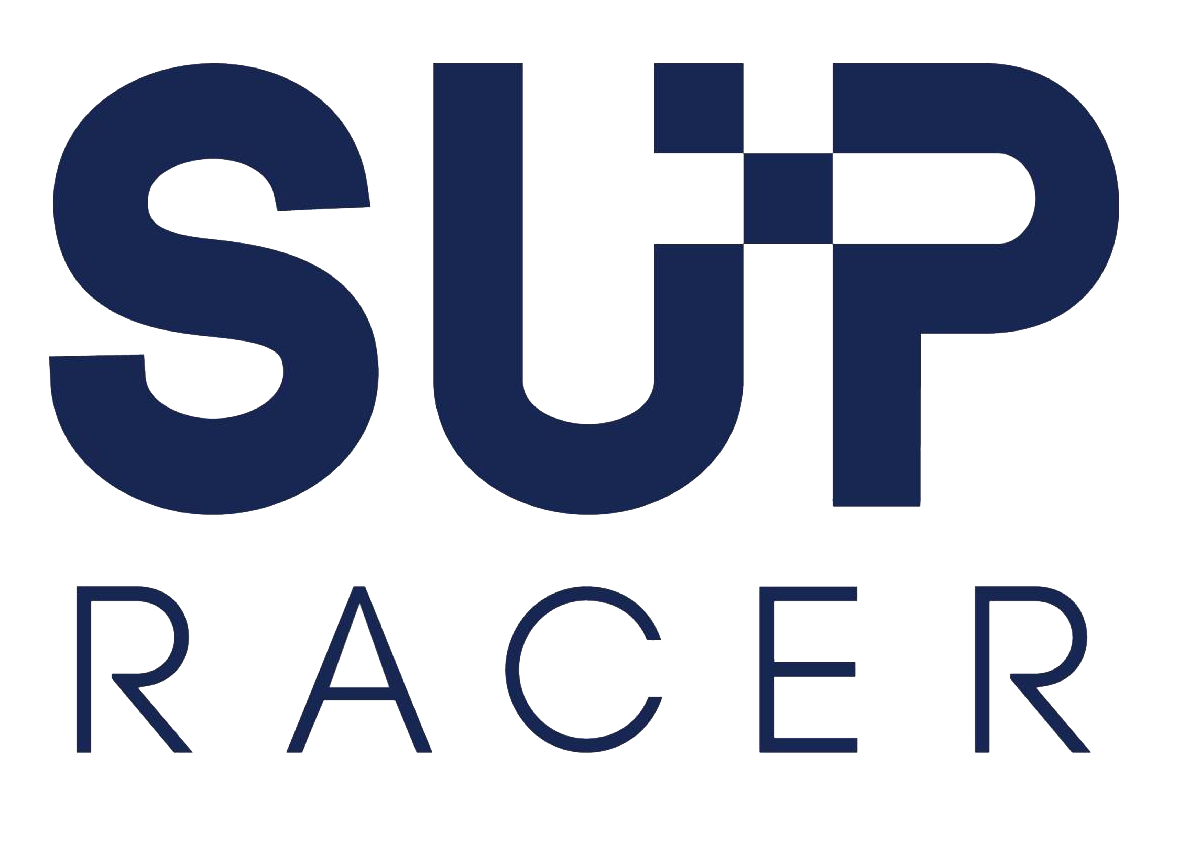
Jim Terrell: The New 4 Metre International Stock Class, Part II

Boss Man’s note: In this week’s Mondays With The Mad Scientist, Jim Terrell follows up on his massively popular article about board restrictions and the future of our sport.
Thousands and thousands of people viewed the article last Monday. There were over 1,000 Likes (a record on SUPracer.com) and 100+ comments, the majority of them positive and most of them agreeing that *something* had to be done, though often with questions about exactly how Jim came up with his proposed restrictions. So this week Jimmy responds to the five most popular questions about why this would be a good idea. Take it away Jim…
>>> In case you somehow missed it, make sure you read last week’s article first: The Death & Rebirth of SUP Racing (aka The New 4 Metre International Stock Class), Part I
*****
The New 4 Metre International Stock Class, Part II
by Jim Terrell
There were a lot of comments on my article last week, which I’m really happy to see. As I’ve been saying all along, I did all this to stir up some debate and help protect the future of the sport we all love.
The exact restrictions I put forward are just my ideas, I’m not saying they’re 100% right but I do believe we have to have some sort of restrictions, otherwise the sport of SUP racing is at risk of becoming an elite and expensive balancing contest, rather than an all-inclusive test of strength and endurance.
So here’s my response to some of the biggest questions that were raised…
#1: Why The 4 Metre Length Restriction?
It’s all about compromise.
Longer, wider boards allow bigger or less experienced paddlers to be more competitive, while smaller, lighter boards favour the more nimble paddlers. There is a speed difference of about 4-5% between 12’6 and 14′ in flat water (and as little as 1-2% in rough conditions).
The general consensus is that 12’6 race boards favour the lighter guys & girls, while 14 footers are better for bigger, taller, stronger paddlers. If we continue down the “two main race classes” path, then this will be a never ending debate… But the 4 metre class would fall right in between 12’6 and 14 and would, I believe, be a fair compromise to both sides of the current argument. It would also end the argument about “which board class” and let us get on with racing.
So that’s one big reason I said 4 metres; it’s a fair compromise between the current 12’6 and 14′ boards.
I firmly believe we have one class too many, and from chatting with a lot of the top guys and girls, it’s a common belief. If we continue with both 12’6 and 14 footers in races, the sport is going to be fragmented, confusing, and a pain in the ass to travel. So if you DO agree that we have one class too many (i.e. that either the 12’6 or 14′ class should go), but you can’t agree which one should get the chop, then let’s meet half way…
So that’s another reason; it gets rid of the fragmentation.
Another reason I chose four metres is that it’s a standard, international measurement: 400 cm. It’s an even number and much easier to understand for everyone outside the US (remember, we’re one of the only countries that doesn’t use the metric system). It could also have the flow-on effect of making it EASIER to get on airplanes, as all SUP race boards would have the same length (ignoring unlimited boards, which paddlers rarely fly with anyway).
And just to be clear: I definitely do NOT want to have “yet another” race board class. The idea of the 4M class is that it would replace both the 12’6 and 14′ classes, rather than creating an additional class. So instead of having three classes like we do now (12’6, 14 and Unlimited), my idea is that we should only have two (4 metres and Unlimited; with 4 metres being used for the majority of races and Unlimited being the specialty, niche class that’s used in open ocean races).
Yes, there would be a slightly messy transition period in the next two years, but in the long run it will be much easier and more logical. In the future we’ll look back and laugh at how confusing the sport was in its early days.
And that’s another point; we’re in the early days still! I’ve heard a lot of people say “it’s too late for change” but I believe we’ve only just tapped the surface of what SUP racing can be.
It’s much easier to make the switch now than in 10 or 20 years. Sweden made the switch from driving on the left hand side of the road to the right hand side of the road in one night during the 60s. Now I know those Swedes are a clever bunch, but if they can tackle something that big overnight, I think we can manage to introduce a new board class in two years. (or maybe we should just get IKEA to introduce a flat-pack race board?)
So basically I believe that the new 4 metre international stock class has the potential to; make racing fairer for all types of paddlers, make races much less fragmented and confusing (not only for paddlers and race organisers, but also the spectators), make travel a lot easier, make the sport much more accessible for first-time race board buyers (how many times have you been asked “Should I buy a 12’6 or a 14?”), and potentially even reinvigorate the Unlimited class, as it would be the only “other” class out there, and the only one where designers are free to experiment without restrictions.
#2: Why The 55cm Width Restriction?
Why 55cm (21.66″) width and not 65cm, 75cm or something else?
Because manufacturers have already started producing boards as narrow as 22″-23″ in width, so restrictions any wider than this would be much harder to get approved by the big companies.
Last year I suggested a minimum width of 65cm, which was relevant at the time, but now we’ve missed that window of opportunity. I believe the longer we keep waiting, the narrower and narrower boards will get and the harder and harder it’ll be to introduce any meaningful restrictions to protect growth and accessibility.
#3: Why The 9kg Weight Restriction?
Just like the width; we’re already seeing production boards around this weight, so to put the minimum any higher will make it harder to get the big manufacturers’ approval. Last year I would have proposed 10kg or 11kg. Again, that window has gone, and if something is not done ASAP, competitive boards will soon be even more expensive and further out of reach to the average paddler.
#4: What About The Airlines?
If you’re going to use the airlines as your measuring device to set standards, I don’t think you’re looking at this issue with the best interests of the sport in mind.
I worked in aerospace for many years, making interiors for commercial aircraft that included the cargo areas of Boeing, Airbus, Embraer and Bomardier planes. We also dealt directly with the airlines and I can confidently say that that when there’s demand to travel with a particular item, a service will be provided, it just takes some asking for. What do you think happens if 20 people a day drive up to McDonalds and ask for a tuna sandwich? They (or one of their rivals) will eventually make one for you. It’s supply and demand.
If you take a look at the online check-in pages for many airlines, you’ll see there’s an option to pre-pay for all types of specific sporting goods, including surfing, windsurfing and kitesurfing equipment. Yeah, you’ve gotta pay a fee, but it’s a set amount and there are no surprises and no arguments when you check-in.
So as I mentioned above, having a set standard for SUP race boards should make it easier to fly; every airline would know that when you rock up at the check-in desk with a SUP race board, that it’s 400cm long. If we have a universal standard length, we could soon see “SUP race board” as a pre-paid baggage option when we check-in online.
And if you believe the limit is somewhere between 12’6 and 4 metres, and that this new stock class would tip the length limit over the edge, again I think you’re wrong.
Almost all airlines publicly state that their length limit is well below 12’6 (381cms), yet all international flights can technically fit items well above 4 metres (400cms) into the baggage hold. For anyone that’s travelled overseas to a SUP race, you’ll know how it goes; it all depends on who you get at the check-in desk. I recently saw one famous paddler get rejected trying to check-in a 12’6, then go to the airline at the very next check-in row (where their buddy was flying) and have both their 12’6 and 14 footer accepted.
Right now airlines + race boards is a game of chance, but if we had a set length standard that the airlines were aware of it would make it much easier for everyone. The airlines could impose a set fee and there would be no surprises for paddlers. We could all travel to the big international SUP races with a lot less stress.
I’ll admit it’s not easy getting on a plane with any type of SUP race board, but if we’re creating this sport around making it easier to check-in at the airport, let’s just all start paddling 9 foot race boards and be done with it.
And besides, even if airlines do refuse to take SUP race boards, there are always other options. I travelled extensively with the US Canoe Kayak Team in the 80s & 90s and we always found a way to get our canoes to the events (canoes which are much longer than SUP race boards I might add). Sometimes we shipped them in advance, rented, borrowed, or whatever we had to do. It was never hard, it just took some planning.
#5: Fear Of Obsolete Equipment?
The board you have right now will always be fine for training, downwinders, recreational and fun paddling. Which is 99% of your paddling time. We’re only talking about the races here. And the way I see it, your current board won’t be competitive in a year or two anyway! Regardless of length, your board will be out of date very soon unless we introduce width and weight requirements ASAP.
So whether we pick 12’6, 14′ or the new 4 metre length as the standard, I feel we must have these other restrictions, otherwise SUP racing will become an expensive balancing contest. I strongly believe a 4 metre class makes a lot of sense, but I also believe the width, weight (and to a lesser extent, the “flat deck”) restrictions are the most important issues.
What do you think? I’d love to hear your thoughts about all this…
Leave a comment below…



